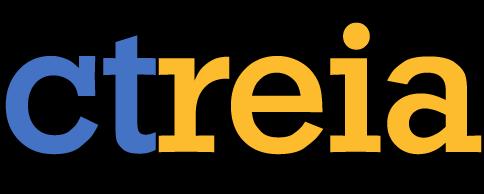
6 minute read
Top 10 Fall Maintenance Tips for Landlords and Property Managers
By: Apartments.com
In many parts of the country, when temperatures cool and the leaves start to fall, deep freezes and piles of snow aren’t far behind.
Advertisement
To prepare for winter’s annual assault on roofs, siding, and walkways, do these 10 fall maintenance tasks to get your rental property ready, and ensure your tenants stay warm, dry, and happy.
1. Clean the roof and gutters
Gutter cleaning may not be a fun job, but it’s something you need to do every year. While you’re at it, use a rake and leaf blower to get the leaves off the roof. Clogged gutters and piles of leaves and twigs in roof valleys are the main reasons ice dams and icicles form. Besides creating extra weight for the roof to support, these freezing weather hazards eventually melt to form pools of standing water that cause leaks. Consider getting gutter guards, but choose wisely. Installing gutter guards can keep out leaves and debris, but be wary of wire mesh guards. They may keep out large debris, but the pine needles and small leaves they allow to pass can block water flow. Mesh guards prevent you from reaching into the gutters, which complicates the task of cleaning. Alternatives include micromesh guards, which keep out pine needles and even shingle grit, and hinged guards that you can lift out of the way when cleaning.
2. Trim overhanging branches
Ice storms happen, and iced-over branches that overhang the roof can snap off and damage the roof. Even if that doesn’t occur, overhanging branches are sources of roof debris that can cause ice dams, and they provide a bridge for rats, squirrels, ants, and other pests onto the roof and into the attic. Getting rid of them is an
important part of fall maintenance.
Branches that can potentially interfere with power lines should be the first to go. Working around power lines is hazardous, so this is probably a job for a pro.
While you’re cleaning up the branches, don’t forget to prune back ivy and other creeping vines that have reached roof height.
3. Rake the leaves
Autumn wouldn’t be as beautiful without falling leaves, and raking them up is a fall maintenance job that every property owner should do. If you haven’t already assigned this job to your renters in the lease, you might want to offer them a nominal rent reduction so you won’t need to do it yourself. You might also consider hiring a landscaping contractor or a local teenage entrepreneur. Removing and properly disposing of leaves protects the lawn and garden, prevents slipping hazards when the rains start, and keeps the homeowner’s association and neighbors happy.
4. Check weatherstripping and insulation
Drafts coming through unsealed doors and windows drive up the heating bill and can make tenants uncomfortable and even unhealthy. Foam weatherstripping lasts from five to 10 years, depending on quality, and should be replaced when it cracks or shrinks. The best time to do this is in the fall, after the days of harsh, foam-degrading summer sunlight are over and before the cold winds blow.
You can control drafts coming through window and door casings by removing the casings and spraying foam insulation in the gap between the window or door frame and the studs. It will probably take a pro about a day to do this to all the doors and windows. If you pay the heating bills, you’ll recover the expense by saving 10 to 15 percent in energy costs over the course of the winter.
5. Clean or replace HVAC filters
Cleaning and replacing HVAC filters is a routine task that you should do every year, and ideally it should be part of your fall maintenance regimen. Central heating systems work 24/7 during the cold months, and they run more efficiently when the filters are clean. Replace all the return air filters as well as any filters on the heater housing itself.
6. Patch holes
Small animals see your basement, attic, and the insulation in your walls as refuges from the cold winter winds. Some critters can get in through holes as small as 1/4 inch in diameter. Patch smaller holes with caulk or foam spray, and use wire mesh, sheet metal, or plywood to cover the larger ones. Be sure to check the attic vents for holes or frayed edges. Do you have rot in the eaves or foundation? Dig it out and fill it with epoxy filler

to prevent rodents from eating their way into your property.
7. Drain exterior faucets
Burst pipes are a perennial winter hazard, and they often occur in pipes feeding hose bibs on the side of the house or in the garden. Prevent burst pipes by turning off the valve to these faucets, then opening each one to allow water to drain out. It’s a good idea to leave the faucets slightly open to ensure that any ice that does happen to form in the pipes has room to expand.
8. Turn off and drain the sprinkler system
Most sprinkler systems have a drain valve located at the lowest point in the system; if you can’t find this valve, you may need to get one installed. To use this valve effectively, you first need to turn off the main water supply, then open the valve for each zone while the drain valve is open. This allows the water backed up behind each zone valve to flow out through the drain.
9. Check and clean the chimney
If your property has a wood stove or a fireplace, yearly chimney maintenance is a must. Creosote builds up quickly. Not many landlords or property managers are equipped with chimney cleaning equipment, so this is another job for a pro. Don’t forget to check the damper and clean the spark arrestor.
10. Do a fall maintenance safety inspection
Loose decking boards and rotted stair treads are irritating in the summer, but they become hazardous in the winter when buried in ice and snow. When you’re replacing popped nails or rotted boards, pay special attention to the railings, especially on outdoor staircases. You want to make sure they can support someone who loses their footing. Applying a non-slip coating to the treads may prevent that slip from occurring in the first place.
Preparing your rental for winter protects your investment and minimizes the chances of getting emergency calls in the dead of winter. It reduces the chances of an accident on your property. You’ll sleep better at night, and so will your renters.


Main Monthly Meeting - Rocky Hill Featuring Jim Heneghan Appraisal business and note brokering
Jim Heneghan of Trinity Real Estate has established direct relationships with financial institutions from his 36 years in banking that allows Trinity Real Estate to offer Non-Performing Notes and REO properties at attractive discounts.
Trinity Real Estate offers a portfolio of notes to enable our equity buyer clients to capitalize on the growing opportunities of acquiring discounted distressed REO properties and notes. Jim Heneghan is a seasoned finance and real estate professional with an extensive experience in all facets of real estate, finance, property evaluation, acquisitions, marketing and sales.


